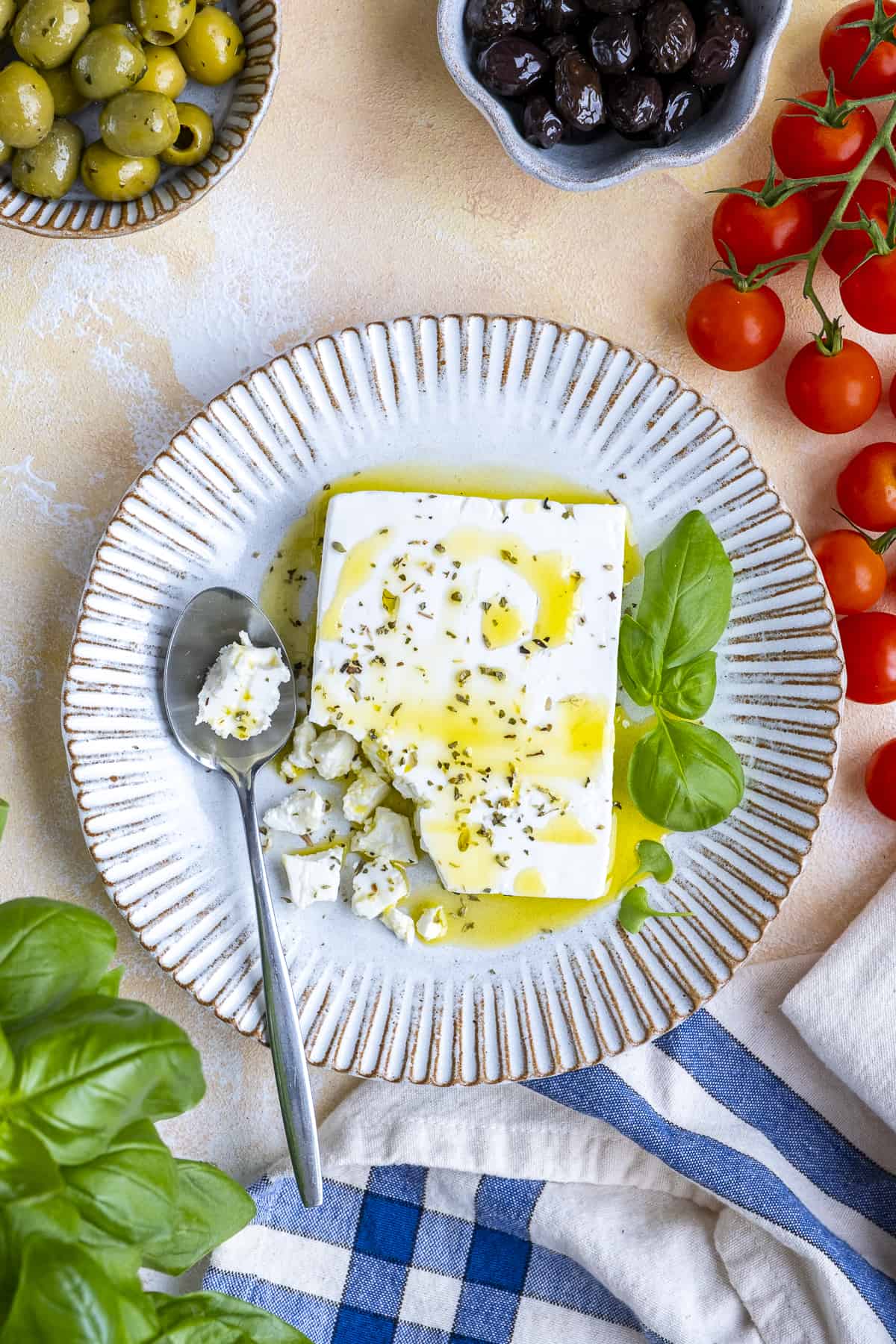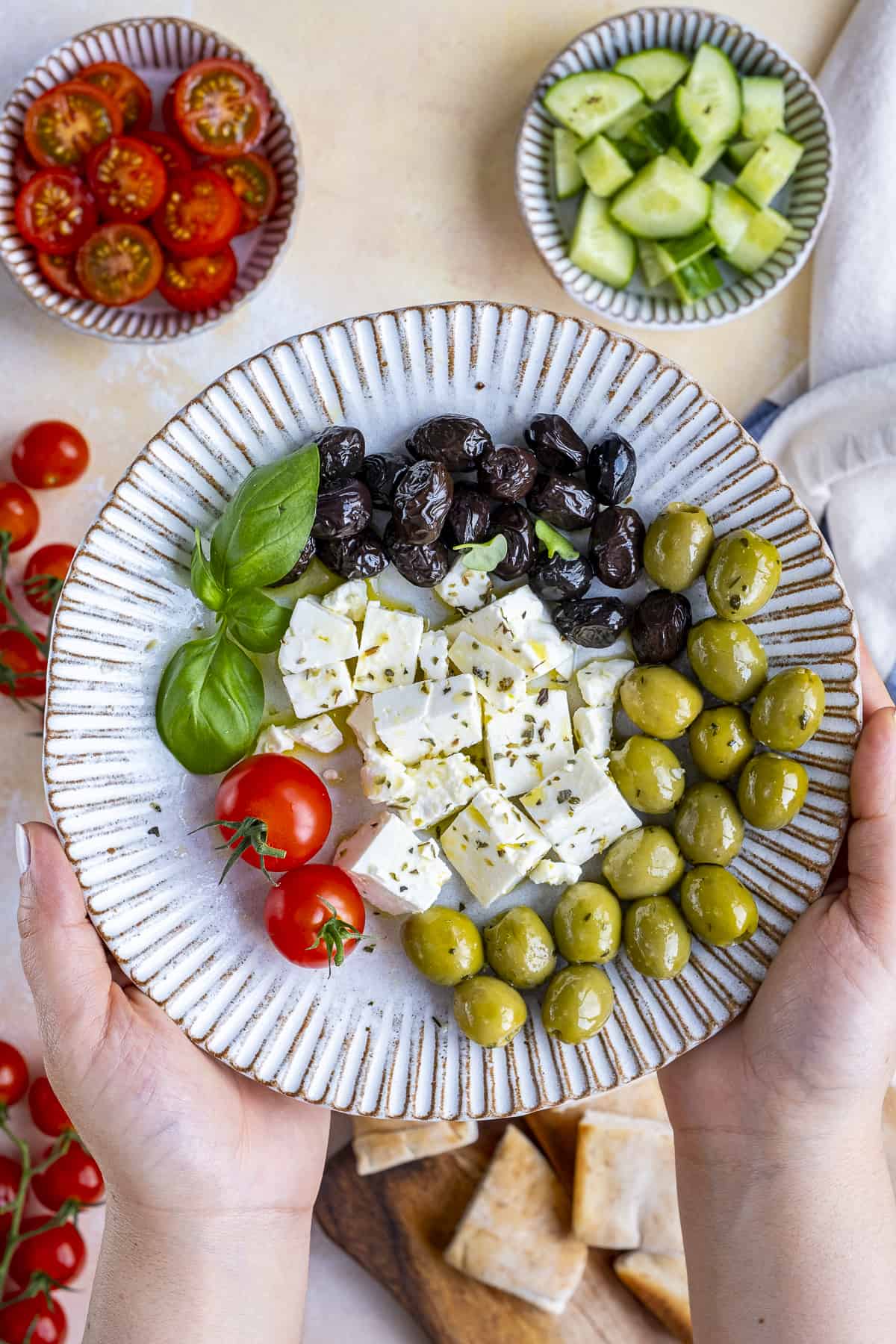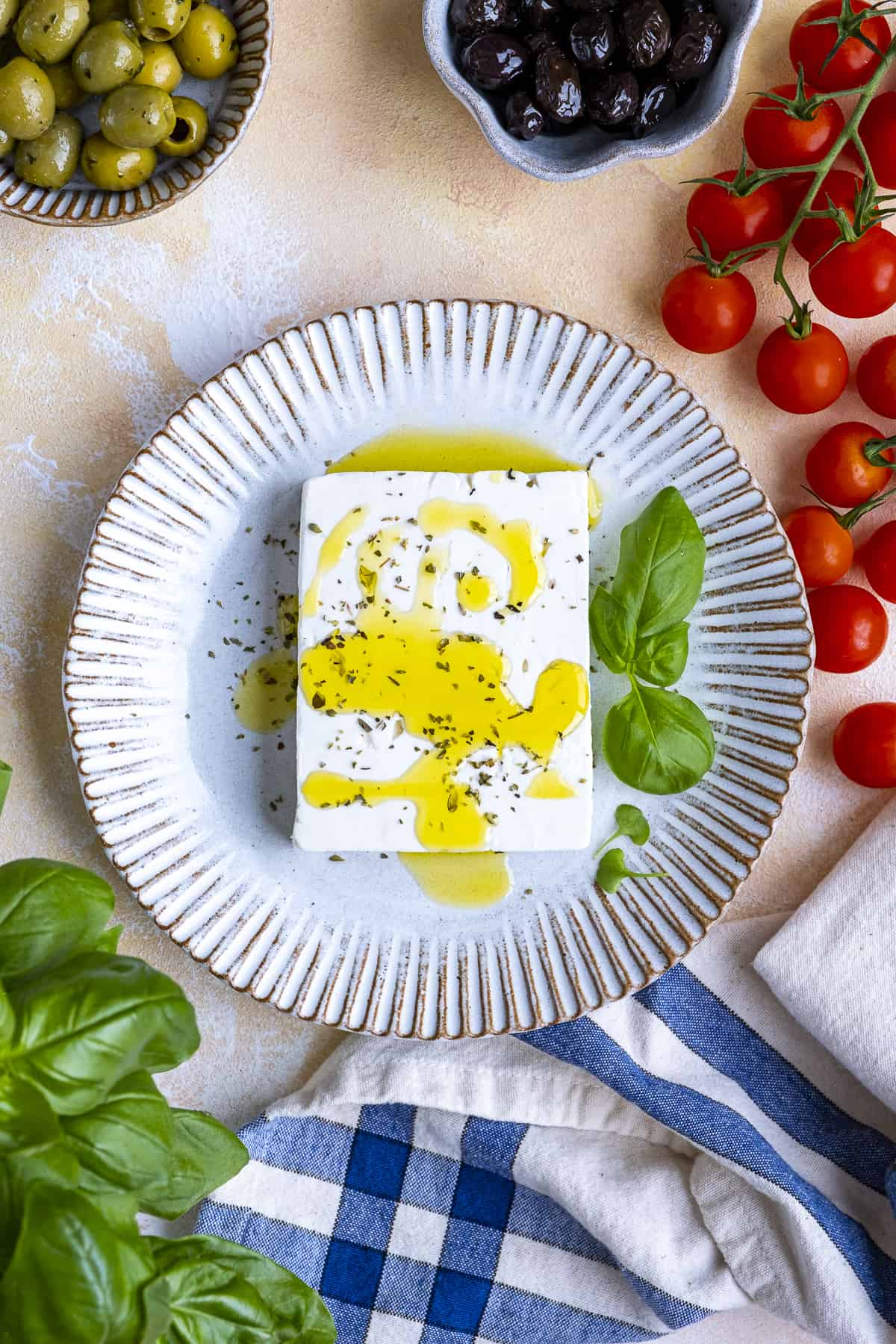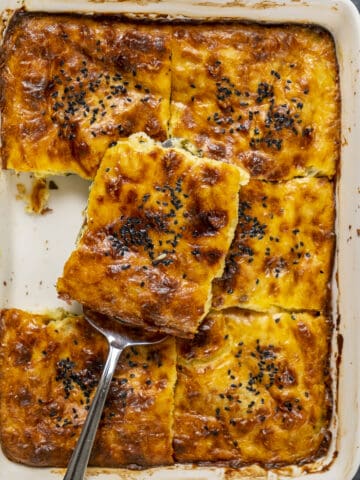With its tangy flavor and crumbly texture, feta cheese is our favorite cheese. It is a staple in our kitchen and we often use it in our recipes. So we have decided to share this guide with you. If you ever wonder what feta cheese is, what milk it is made from, where it is from, whether it is good or bad and how to use it in recipes, this guide is for you!

Who doesn't love a feta cheese sandwich? It is one of the best lunch ideas that is easy and quick to make yet quite satisfying. And if you don't feel like eating bread, make a quick green salad and top it with crumbled feta cheese. You get a next level salad that will keep you full for a long time.
What is Feta Cheese?
Feta is a soft, brined white cheese with a tangy and salty flavor. It has a firm texture but gives a creamy feeling in mouth. The tangy taste might change depending on what type of milk it is made from (sheep, goat or even cow). You can slice or crumble it when using in dishes.
We love it in its simplest form; drizzled with olive oil and seasoned with herbs like oregano. It's a proper breakfast for us when accompanied by olives and tomatoes. It is used in several recipes ranging from appetizers or salads to sandwiches.
What Is It Made From?
Feta cheese is originally made from sheep's milk or from a combination of sheep's milk and goat's milk.
As a PDO product, the name feta can only be given to certain cheeses. These traditional cheeses are made from sheep's milk or has to contain minimum 70% sheep milk. So the maximum percentage of goat's milk in feta is 30%.
Feta cheese is NOT made from cow's milk. It has to be labeled as feta-style cheese if it contains cow's milk.
Where Is It Originally From?
Feta is a Greek word coming from the Italian word fetta that means slice. It is originally a Greek cheese. It is an ancient form of cheese that is cured in brine. We even see the first mention of feta cheese in Homer's Odyssey.

According to this article on Wikipedia, it has been a PDO (Protected Designation of Origin) product in the European Union. This means that the name 'feta' is protected by EU legislation and limited to the cheeses which are produced in a traditional way in Macedonia, Thrace, Thessaly, Central Greece, the Peloponnese, Lesvos and Island of Kefalonia (source here).
That being said, there are several types of brined white cheeses that are produced in the Eastern Mediterranean and around the Black Sea. They are known as 'white cheese'. Also, the production of feta cheese has expanded throughout the years.
Today, it is produced in Australia, Canada, Germany and the United States. Although they are mostly made from cow's milk, these cheeses are also known as feta. So the name feta is considered as the generic name of white cheese that is aged in brine.
How Is It Made?
To make genuine Greek feta, you need sheep's milk or a mixture of sheep (70%) and goat's milk (30%).
This article on Wikipedia explains the traditional method of producing feta with pasteurized milk as follows: Add a starter culture to the pasteurized milk for acidity and flavor. Bring the milk to approximately 35 °C (95 °F), add in rennet to set the casein.
The cheese curds formed are chopped and placed in a cloth bag or special molds so that the excess whey is drained. When the curd is firm after several hours, it is cut into cubes or blocks, each of them is salted (with kosher salt) and placed in metal containers or wooden barrels. They sit there for several days.
Then the cheese blocks are aged in brine at room temperature for several weeks and then in the refrigerator for 2 months.
Feta cheese blocks are packaged with a little brine in plastic cups and ready to be sold at supermarkets.
Is It Healthy?
If you are familiar with the taste of feta, you know how delicious it is. But you might have concerns: Is it good or bad? Feta is a low-fat and low-calorie cheese, so it is a healthy and nutritious food recommended by nutritionists.
It is rich in calcium, and a good source of B vitamins, phosphorus, selenium and protein as well.
Feta cheese is lower in fat and calories when compared to cheddar and parmesan.
According to this article on Healthline, 1 ounce (28 grams) feta cheese contains 6g fat and 4g protein. And the calories it has is 74. It is also stated that feta contains more calcium than mozzarella, cottage cheese and ricotta. And it has decent amount of magnesium, vitamins A and K, folate and iron.
So what are the health benefits of feta cheese?
- Thanks to the nutrients like calcium, phosphorus and protein it contains, feta cheese is good for bone health and might prevent osteoporosis (source here).
- Like yogurt, feta is a fermented dairy product and contains probiotics, so it is good to immune system and gut health too (source here).
- Another good thing about feta is that it contains a good amount of Conjugated linoleic acid (CLA), which is a fatty acid that is helpful to prevent cancer (source here).
Although it is a good source of vitamins and minerals and it has several healthy benefits, you still need to be careful about the consumption of feta cheese as it contains high amount of sodium. Salt is added both in the cheese-making process and when storing it in brine. So if you are following a low-sodium diet, you had better rinse the cheese well and then use it.

How To Store
The best way to store feta cheese after opened is in its brine. If the brine in the package is too little, you can easily make it by mixing 1 cup water with 1 teaspoon kosher salt. Put the cheese with this easy brine in a container and store in the refrigerator for several months. Learn more about this here: How to store feta cheese.
Uses
Feta cheese can be used in several ways. We love to combine it with some olives and tomatoes for breakfast. Also, we use it in our borek recipe, which is a savory pastry like spanakopita.
It makes a great appetizer in feta stuffed peppers. Your pizza or flatbread gets even tastier when you add some feta on it.
You can use it in pasta, in a luscious haydari yogurt meze or in Turkish mucver (zucchini fritters).
And during summer, our favorite lunch is watermelon paired with feta cheese.
Frequently Asked Questions
Ricotta cheese is the best substitute for feta. It has a similar texture as crumbled feta. But the flavor is less tangy and less salty.
It is not. Feta is made from animal milk, so it is not dairy-free. That being said, you can make your own vegan feta cheese at home.
The most common cheese in Turkey is white cheese (beyaz peynir), which is a brine cheese made from sheep, goat or cow. The texture and flavor is very similar to feta, so they can be used interchangeably.
You can find it at the dairy section of grocery stores, among other cheeses.
As always: If you make this recipe, let us know what you think by rating it and leaving a comment below. And post a pic on Instagram too—tag @give_recipe so we can see!
Sign up for the FREE GiveRecipe Newsletter to get the new recipes into your inbox! And stay in touch with us on Facebook, Pinterest, YouTube and Instagram for all the latest updates.






Leave a Reply